Overlay – Language
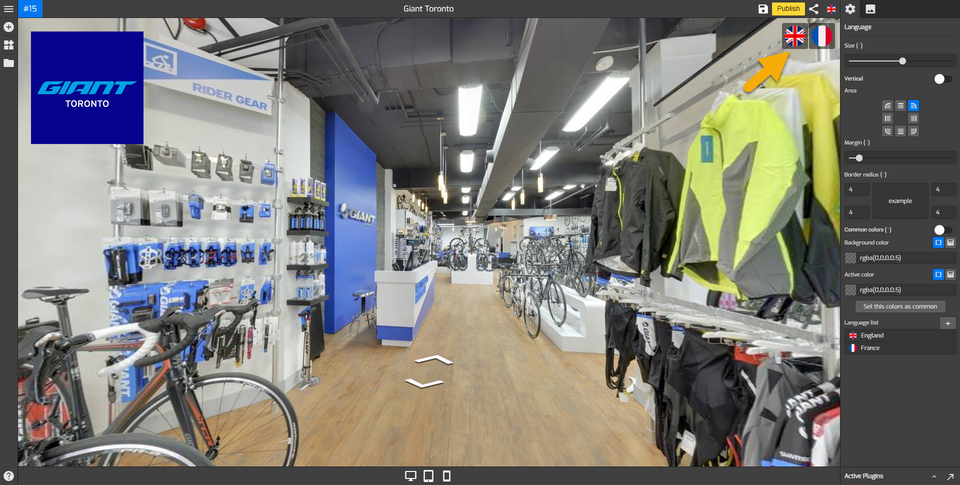
Overlay allows you to set up a language and create a multilingual tour easily, without having to install any third-party extension. In this tutorial, you will find complete steps on how to set up the language on Overlay.
How to work with the Language Plugin?
Following are the steps to set up the language on overlay:
- Click on the “+” icon (A key) to open the Plugin Manager for Hotspots, Menus, Maps, Control Center, and Other. Then click on Language under the Other plugin option.
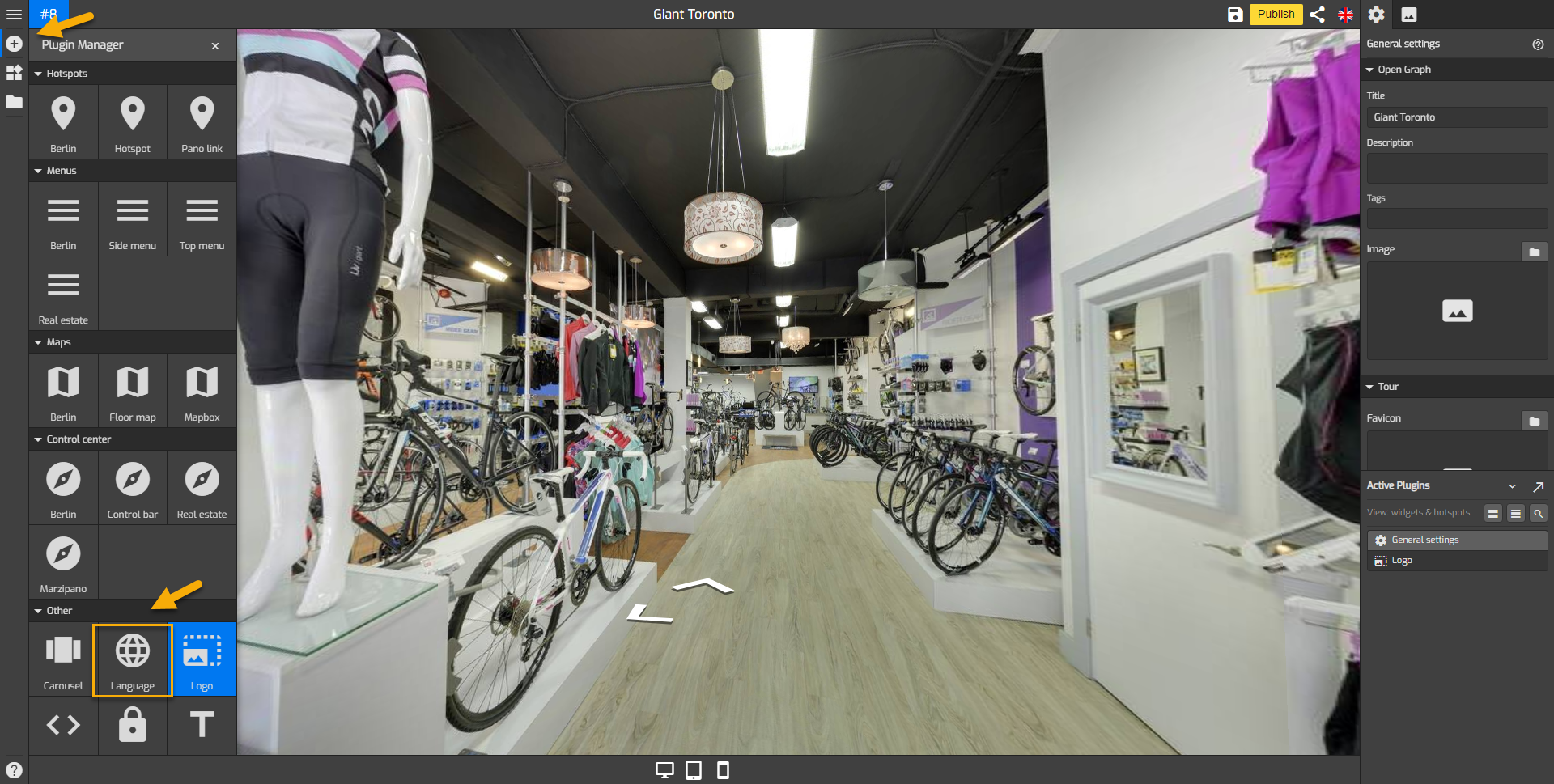
2. The language plugin menu appears on the right side of your overlay screen, make the desired changes.
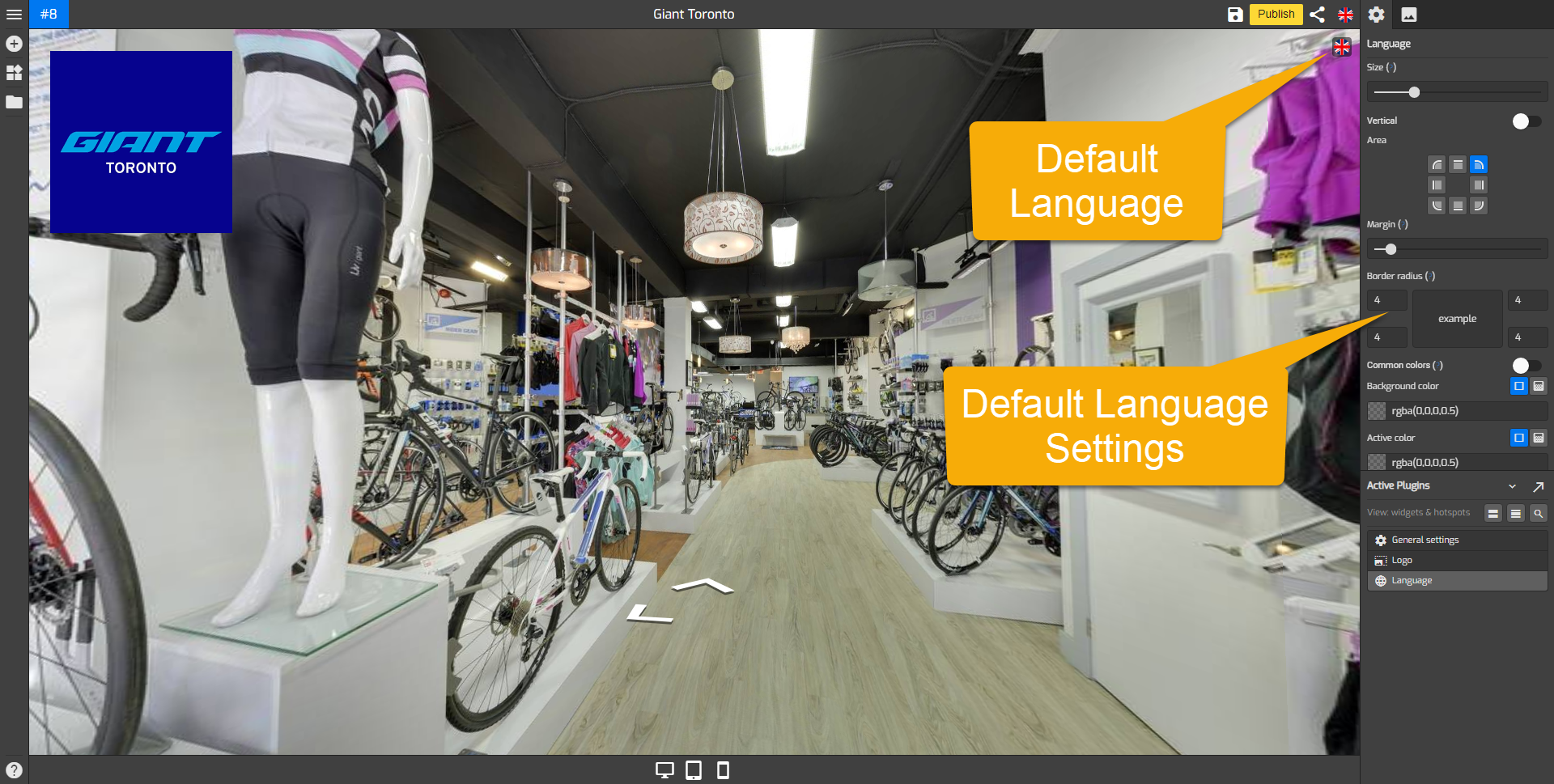
The following are the details of the tools in the language setting.
Size: adjusts the size of the language icon on the overlay, slide the bar to the right to enlarge the icon.
Vertical: sets the language icon to vertical or horizontal.
Area: changes where the language icon is attached. Defaults to 'top right corner'.
Margin: adjusts the distance between the language icon and the tour edges.
Border Radius: rounds the corners of the icon`s outer border edge. If the value is 0 the icon is in square shape. If you increase the value it will round the edge of the outer border edge.
Common colors: sets the language icon colors connect to colors in the general setting.
Background color: sets the color of the icon background.
Active color: changes the colors of the active language.
Set this color as common: sets the color which belongs to language plugin and determines the default colors choices for other plugins.
Language list: adds languages to your overlay.
3. Click on the "+" button on the language list to open the language drop-down list. Then select a new language in the Language drop-down list and click add.

4. After that you have to export the main language (English) to a text file and translate it to the target language. For more detail about exporting and importing the language, you can see "How to Export the main language file?" and "How to Import the translated language file?" below.
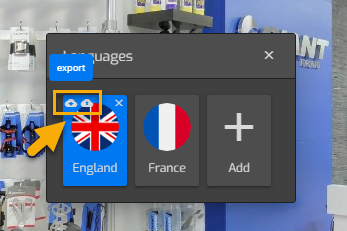
5. You can also add a language using the language button at the top menu bar. Click on the language icon then repeat step 4 above. On this wise, you don't have to go through each plugin.

6. After filling all the information about language, click on the Save button to save all your language settings.

How to Export the main language file?
1. You can export each imported language to a text file directly from the Language icon. Simply click on the Export button on the language icon.
2. After you click on the Export button language file will be exported into a text file and automatically downloaded to your PC. The name of the exported file will be: [language code].txt so for example if you export the England, the name of the downloaded file will be en.text. The file will be opened in the UTF-8 format and The text file contains language parameters(metadata). The lines in the text file should not be deleted or moved elsewhere.
Example of language metadata for the main language file:
3. Once the export has completed, you can start translating the metadata structure into the target language. The following example is English to French.
4. Save the text file in a text format before you import it to the target language.
How to Import the translated language file?
1. After you customize translations in your language file, you can import it back to the overlay. First, return to the Overlay language settings.
2. Select the target language.
3. Click on the Import button in the target language icon. The file that is being imported will overwrite the language in the system!
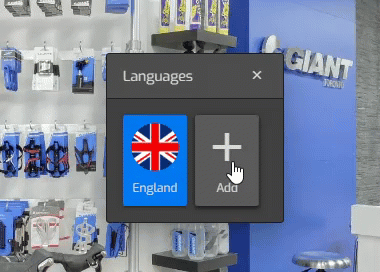
4. Click on the target language icon to switch the language and see the results.
